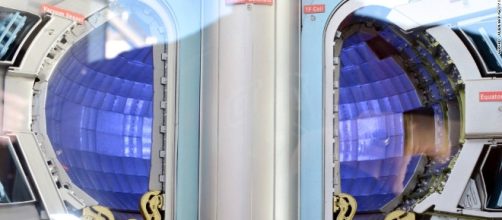A recent article in Forbes examines the fossil fuels vs. renewables argument and has found both of them to be wanting. Fossil fuels belch out pollutants that can be problematic, even if one is a c climate change skeptic. Renewables, on the other hand, have a problem in that their intermittent. Solar does not work when the sun is not shining. Wind does not operate on calm days. energy storage technology such as batteries may be inadequate to deal with the problem. Needless to say nuclear power has gotten bad press in recent decades, partly because of a handful of high-profile accidents at power plants that have proven very costly.
Controlled nuclear fusion has been in development for the past 65 years. The process is the same as the one that powers the sun. Atoms are fused together, releasing energy and, in most scenarios, fast neutrons. Fusion using helium 3, an isotope not found naturally on Earth, but in abundance on the moon, create less byproduct and more energy but have its own technical challenges.
The problem that has plagued nuclear fusion for the past decade is that it had never gone past the so-called breakeven point. That is to say, no controlled fusion reaction has ever occurred that puts out more energy that it took to create it. The old joke is that limitless fusion power is 50 years away and has been for the past 50 years.
Nevertheless, some progress is being seen toward unlocking fusion’s potential, from the standard big Tokamak reactors to Lockheed Martin’s so-called compact fusion technology. A successfully controlled fusion reaction that puts out more energy than it takes to maintain it would be a game changer for the energy wars. Such an event would point the way to a world where most of its energy needs are met by fusion power plants with virtually limitless capacity for expansion. Such technology would work without pollution and would run consistently, day and night, rain or shine, windy or calm.
One of the problems holding fusion back has been funding. The oil and gas industry has the resources to refine technologies such as hydraulic fracking. The Obama administration was quite lavish in its support of renewables, as have some states.
California had been generous toward solar. Texas has developed quite a bit of wind capacity. But fusion, always seen as a far future technology, has not been generously funded by comparison. Perhaps it is time for that situation to change so that the arguments over what form of power generation is best for the planet can, at last, be brought to a close.

